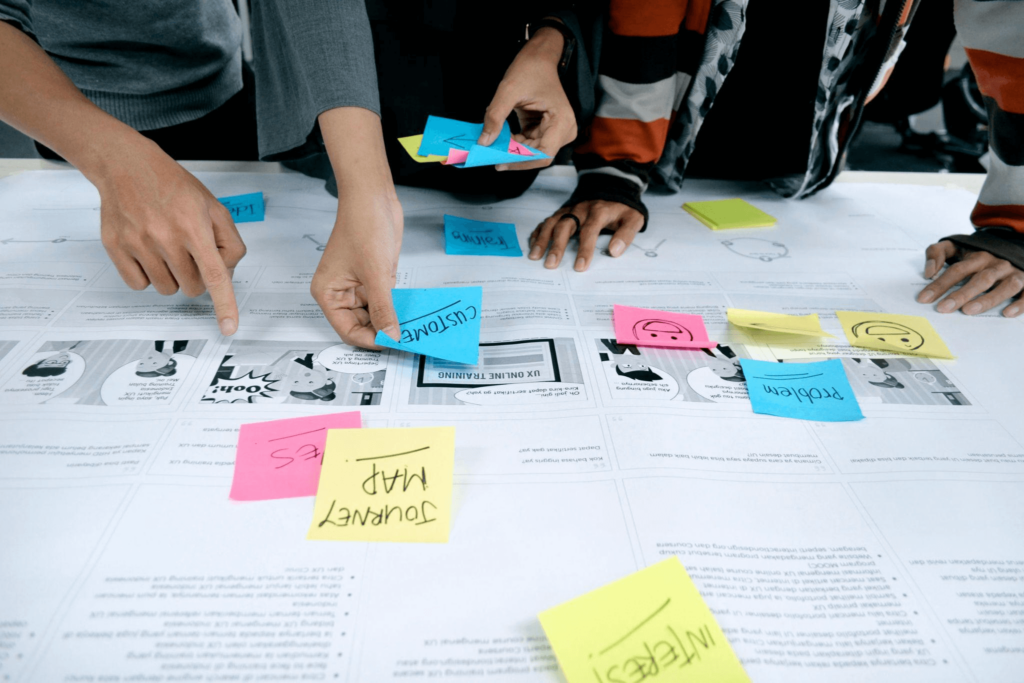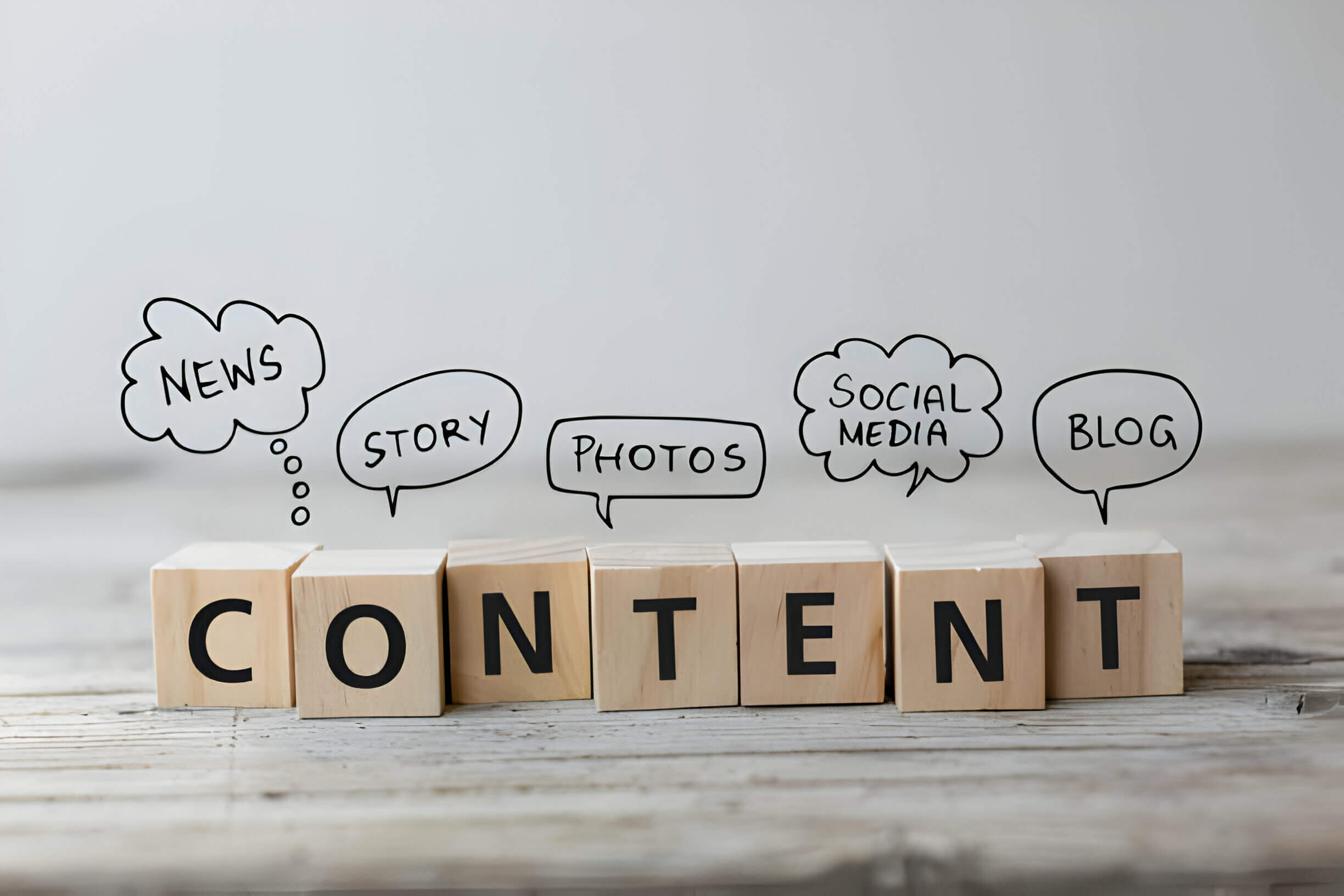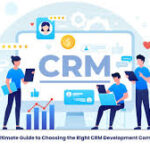Content is one of the most powerful tools in marketing. As many as 72% of marketers confirm this.
Your content can literally do wonders for your brand recognition, conversions, and retention. Yet, it will only bear fruit if you get it right. By saying “right,” we mean that you must make your content perfectly align with the specific stages of the customer journey your prospects go through. If you feel any difficulties, feel free to ask TakeSurveyGuide to boost your NPS, CES, and CSAT score with ease.
What Is a Customer Journey?

It’s a roadmap of a path people come through when interacting with a brand. This path begins with realizing the problem and the need for an effective solution to it and goes all the way to becoming a loyal customer.
The stages of this journey can vary slightly depending on different factors. Yet, the core phases are:
- Awareness;
- Consideration;
- Purchase;
- Retention;
- Advocacy.
Should Your Brand Bother About It at All?
In a nutshell, a customer journey is a reflection of your brand’s image and customer experience. According to Gartner, these days, 80% of brands compete not on the quality of products and journey customer service but primarily on the experiences they deliver.
Understanding and optimizing your customer journey helps you:
- Understand your customer needs and behaviors better;
- Identify effective touchpoints to connect with your prospects;
- Boost client engagement;
- Complement your marketing efforts;
- Enhance conversions and ROI;
- And more.
The Key Tasks of Content at Every Phase in Your Customer Journey

Awareness Stage
At this point, a person discovers a problem, starts looking for a product or journey customer service that can solve it, and discovers your brand and offerings in the process. The perfect content for this phase is one that addresses your prospects’ core pain points, offers a solution, answers the most common questions, and builds trust toward your brand.
Consideration Stage
That’s when a potential customer starts considering available solutions. Unless it’s an impulsive purchase, typically, prospects will do a lot of research at this stage because modern consumers mostly want to make their own well-weighted decisions. For example, in the Demand Gen survey, about 40% of buyers reported they checked three to five content pieces before making a purchase in B2B. Thus, they research the options and compare alternatives.
Here, you want to focus on content that makes your value proposition, emphasizes the benefits, and positions your brand as the best solution to the problem.
Purchase Stage
During this phase, an individual finally makes a buying decision. Thus, they need a lot of information to know exactly what they are buying and what they are going to get for their money.
Here, your best bet is content that provides clear and helpful info on pricing, features, and other crucial buying factors and once more reminds them of the real benefits of buying from you. Also, this stage involves content tailored to prospects who are hesitant (for example, who abandon their carts) – it should give them an offer that will stimulate the buying decision.
Retention Stage
This is the moment after the first purchase when a new client decides to repeat business with you (or not). The perfect option for this phase is content aimed at building lasting and engaging relationships with your customers. It can include delivering valuable and engaging insights, providing unique offers, etc.
Advocacy Stage
At this point, new customers turn into loyal ones and start advocating your brand by recommending it to their friends and family and spreading awareness. However, only if they receive a positive experience with your brand. To match their needs at this stage, opt for content that encourages clients to recommend your brand to others. For example, content that emphasizes your loyalty programs, referral bonuses, special deals for brand advocates, etc.
Example
If you are wondering what this journey looks like in real life, here is a brief sample. Let’s say your business is an online essay writing service that helps students handle their assignments and boost grades. During the awareness stage, your content should address typical student problems, such as a lack of time, pressing deadlines, etc.
When prospects proceed to the next phase and start considering different service providers, you need to give them something worth paying for – your unique selling points and benefits.
Finally, when they are almost ready to make a purchase, you need to encourage students to say, “Please, write me an essay,” and pay for essay writing from DoMyEssay you by answering their questions, mitigating any possible doubts, and showcasing what makes your essay writing service the best solution to their problems. After this, you need to provide additional value and bonuses to ensure continuous business and loyalty.
3 Expert Tips to Tailor Your Content for The Customer Journey
- Recognize Your Targets
Start your content optimization path with a thorough analysis. Your aim is to identify the audience you are targeting. In other words, you need to determine an ideal customer profile (ICP) that wraps up the key features of your targets, as well as what pain points they have, what interests them, how they behave, etc.
Today, there are multiple channels to do this. You can use analytical tools, social media, surveys, and other available ways to create compelling customer personas for your brand.
For maximized outcomes, consider segmenting your overall target audience after determining it. You can create dedicated segments based on different ICP behaviors, demographics, and other factors that might be influencing their needs and buying motives. Doing so will help you create content that perfectly matches the preferences of each group and make them convert.
- Define the Stages
Earlier, we defined the key stages of a customer journey for you. They all are always present there regardless of your goals or what kind of business you run. However, it’s never a linear process. Depending on the objectives you have in mind, you may integrate different channels, touchpoints, and interactions into your customer journey. This basically means that the specific stages you will focus on can be slightly different to align with your brand and objectives.
There are several different frameworks of a customer journey that you can use. Some common options are:
- AIDA – Awareness, interest, desire, action;
- RACE – Reach, act, convert, engage.
Identify a perfect framework for your business and determine the specific stages your customers go through.
You can try tools like the Customer Journey Map Template or similar to make a visual presentation of your customer journey. This can help you identify the gaps and opportunities that are there and improve the overall journey to match your ICP’s needs and behaviors.
- Create Content for Every Stage
Once you have a clear roadmap of your customer journey, do some deep research and analysis to identify the right formats of content and messages for every stage. You already know about the key goals and features of content for every stage. Now, let’s look at some actual examples.
Awareness
The best content types for establishing credibility and spreading awareness include blog posts, infographics, and e-books. These types of content can cover a variety of topics and generate interest, trust, and awareness for your prospects. At the same time, they can efficiently answer the core questions and address your prospects’ pain points. On top of that, 70% of people prefer to get information from blog articles rather than traditional ads, as Demand Metric reports. These types of content are the most engaging and memorable and are easy to share across all channels, including your website, blog, social media, etc.
Consideration
The best types of content for prospects who aren’t ready to make a buying decision yet include case studies, webinars, and white papers. These content types are perfect for demonstrating the features and value of your products or services because they show exactly how your brand addresses specific problems and what benefits your customers gain from them.
Besides, these types of content can be used as lead magnets. For 53% of marketers, for example, webinars are the top choice as they generate the most high-quality leads, according to the Demand Gen Report. That is, you can provide access to them upon registration or contact details sharing, which can be later used for nurturing.
Purchase
This is the stage when your prospects make a decision to buy or not buy from you, so they want to know as much as possible about your brand, products, services, prices, etc. The perfect content types for this stage include FAQs and product/service demos. These content types provide a better understanding of your business and offerings and share useful information.
Also, customer testimonials play a crucial role during the purchase stage, especially when you provide services – let’s say, essay writing help. In this case, displaying reviews from other students will help you provide social proof to your brand and ensure potential customers that you are the best paper writing service for them.
Retention & Advocacy
When it comes to retaining new clients and turning them into your brand’s advocates, the range of content types you can use for these purposes is pretty wide. Some of the most effective options include blog posts, podcasts, social media publications, emails, etc. Podcasts, in particular, have immense potential, as Hubsport reports, with the average listener spending 16:14 hours with online audio and listening to eight podcasts weekly. You need to identify the most efficient types of content that will work for your audience based on their interests, needs, and the channels they use.
The Bottom Line
Tailoring content to your customer journey is a surefire way to increase conversions, ROI, and retention. When done right, it can help you address the right questions and needs of your clients and create the best experiences for them while also attaining your business goals.
After reading this guide, you have everything you need to make the most out of your content at every stage of the customer journey. Use these tips to ensure success and growth! And don’t forget about measuring the results and refining your strategy for the best outcomes!

I am Marry Soni. Since 2015, I’ve been a blogger, and I adore writing. I greatly enjoy writing about survey and login guide. I maintain numerous blogs, including https://takesurvery.com/. pdpanchal@gmail.com is how you may get in touch with me.





